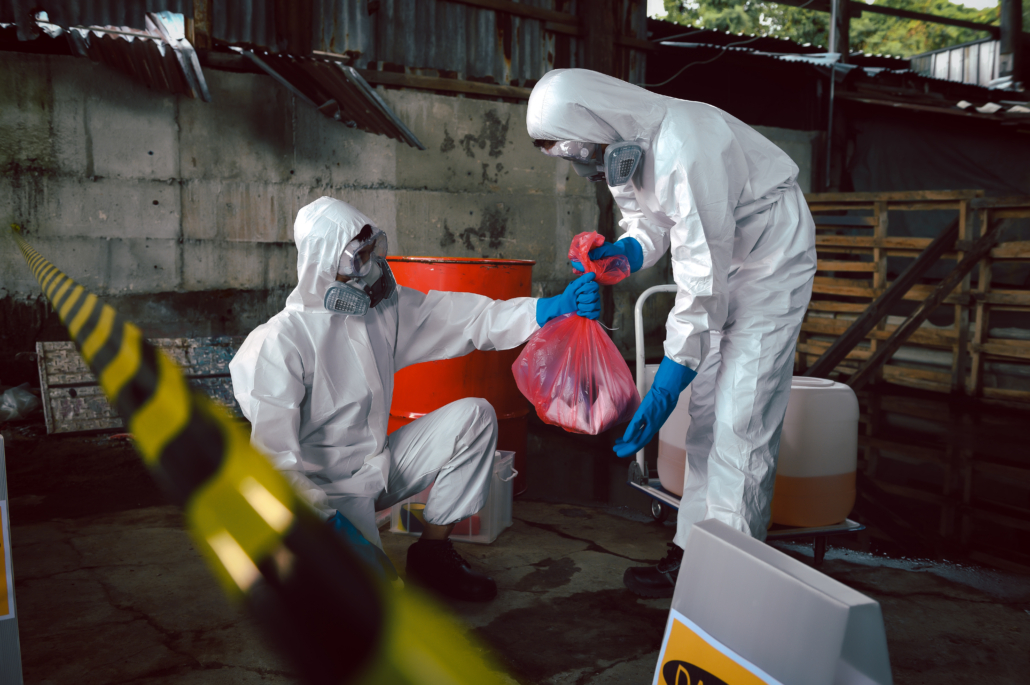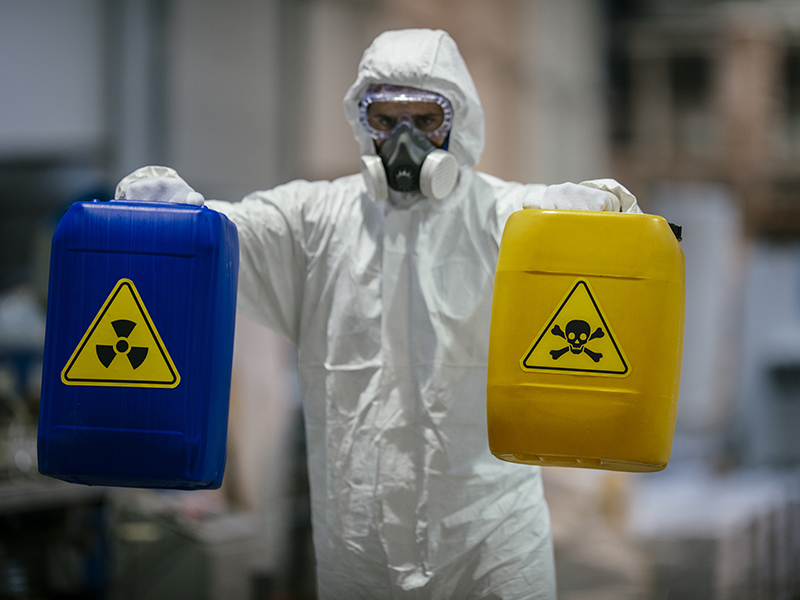Specialist Biohazard Cleaning for Criminal Offense Scenes, Injury Incidents, and Polluted Rooms
In the world of specialist biohazard cleanup, meticulous focus to detail and adherence to safety protocols are vital. As we dig right into the complexities of biohazard cleaning for these delicate environments, a deeper understanding of the difficulties and essential procedures involved will certainly emerge, losing light on the vital duty of specialist cleanup solutions in bring back security and peace of mind.

Importance of Biohazard Clean-up
Biohazard cleanup complying with criminal offense scenes and trauma cases is important for making certain the safety of individuals and the setting. When these cases happen, they frequently leave behind a selection of biohazards such as blood, bodily fluids, and various other possibly contagious materials. These materials can harbor harmful microorganisms like microorganisms and infections, presenting major health and wellness threats if not correctly cleaned and sterilized.
Expert biohazard cleanup solutions are educated to take care of these unsafe products securely and efficiently. They have the required devices, such as personal safety equipment and specialized cleaning up representatives, to extensively sanitize the affected areas. By entrusting the clean-up to experienced specialists, individuals can stay clear of exposure to harmful microorganisms and prevent the spread of infectious illness.
Furthermore, proper biohazard cleaning is essential for protecting the environment. Inappropriate disposal of biohazardous products can pollute soil, water resources, and air, posing a danger to wild animals and the community. By adhering to strict clean-up methods, specialists can guarantee that biohazards are safely removed and dealt with according to guidelines, minimizing the threat of ecological contamination.
Sorts Of Biohazards Encountered
Numerous harmful materials commonly come across in criminal offense scenes and injury incidents present substantial wellness risks if not dealt with appropriately. Blood and bodily fluids are amongst the most common biohazards located in these scenarios.
Another kind of biohazard frequently run into is sharp objects like needles, busted glass, and various other items that can trigger injuries and send infections. Chemical hazards are also an issue, as criminal offense scenes might consist of compounds like tear gas, pepper spray, or medicine manufacturing materials that need customized handling and disposal procedures to avoid additional injury.
Furthermore, mold and bacteria development can occur precede where decay or extended direct exposure to moisture has actually taken place. These microorganisms can release contaminants and irritants into the air, posturing respiratory system threats to those exposed. Generally, biohazard clean-up specialists must be well-appointed and experienced to successfully take care of these various sorts of harmful products to guarantee the security of themselves and others.
Equipment and Safety Gear
When attending to the crucial task of taking care of biohazards encountered in crime scenes and trauma incidents, the use of proper devices and protective gear is vital to guaranteeing the security of individuals involved in the cleaning procedure. Individual safety devices (PPE) such as gloves, goggles, masks, and coveralls are necessary to prevent direct contact with potentially harmful substances. Respirators are crucial when taking care of biohazards that may end up being airborne, shielding how do you clean up blood from carpet workers from breathing in hazardous particles. Specialized cleansing tools like biohazard anti-bacterials, sharps, and bags containers are necessary for the risk-free collection and disposal of polluted materials. Additionally, sturdy tools such as industrial-grade cleaning agents, foggers, and ozone generators may be required to thoroughly disinfect the afflicted location. Making certain that all tools is properly maintained, regularly checked, and used according to safety guidelines is vital in lessening the threat of direct exposure to biohazards during cleanup procedures.
Cleaning Process and Strategies
Detailed and efficient cleaning of biohazardous materials from criminal offense scenes and trauma occurrences calls for meticulous interest to information and adherence to strict security methods. The clean-up process usually involves several key steps. At first, the location has to be analyzed to identify the extent of contamination and the ideal cleansing strategies needed. Next off, all biohazardous materials, consisting of blood, bodily fluids, and cells residues, should be meticulously gotten rid of and taken care of in conformity with regional regulations.
Following the removal of biohazardous products, the damaged area goes through a comprehensive cleaning and disinfection procedure. This step includes using specialized cleansing representatives and tools to guarantee that all traces of contamination are removed. After cleaning, the location is subjected to strenuous testing to verify that it is complimentary and safe of any remaining biohazards.

Purification and Disposal Procedures
To guarantee complete purification and proper disposal of biohazardous products, following the thorough cleaning procedure, particular procedures must be diligently adhered to with rigorous adherence to security protocols. Purification entails the removal or neutralization of impurities to minimize the risk of direct exposure and spread of harmful compounds. This process normally consists of cleaning, sanitizing, and disinfecting the afflicted area making use of specialized equipment and EPA-approved chemicals.
As soon as decontamination is completed, proper disposal of biohazardous materials is vital to avoid additional contamination or harm. Biohazardous waste, such as physical liquids or blood-soaked materials, need to be carefully accumulated, packaged, and identified according to governing standards. ATP testing. These materials are then carried to certified facilities for disposal through proper networks, guaranteeing compliance with neighborhood, state, and federal policies

Conclusion
Finally, professional biohazard cleaning is critical for making sure the reliable and risk-free elimination of unsafe products from criminal offense scenes, trauma occurrences, and contaminated spaces. By making use of specialized devices, protective gear, and complying with correct cleanup processes and strategies, biohazard clean-up teams can successfully decontaminate and dispose of biohazards, minimizing the threat of direct exposure and harm to individuals and the setting.
As we dive into the ins and outs of biohazard clean-up for these delicate environments, biohazard cleanup information a much deeper understanding of the obstacles and essential procedures entailed will certainly arise, losing light on the essential role of professional cleaning services in recovering safety and security and peace of mind.
Specialist biohazard clean-up solutions are educated to manage these hazardous materials safely and efficiently. By adhering to rigorous cleanup procedures, specialists can make certain that biohazards are securely eliminated and disposed of in accordance with guidelines, lessening the threat of environmental contamination.
On the whole, biohazard clean-up professionals should be well-appointed and skilled to properly take care of these numerous types of harmful materials to make certain the safety and security of themselves and others.
When dealing with the crucial job of taking care of biohazards encountered in crime scenes and trauma occurrences, the usage of proper tools and protective equipment is critical to ensuring the safety of people included in the clean-up process.
Comments on “Flood Damage Restoration: Quick and Effective Recovery for Your Home”